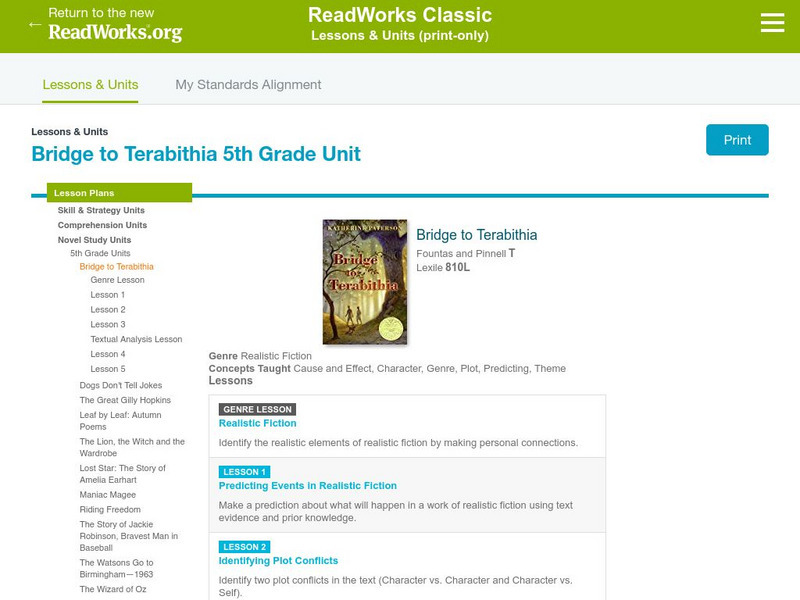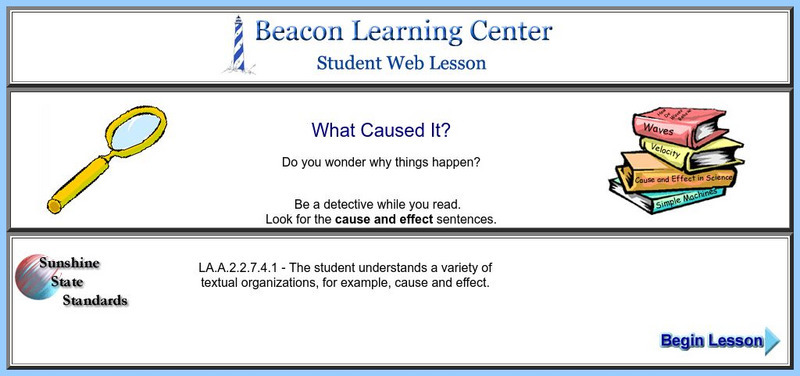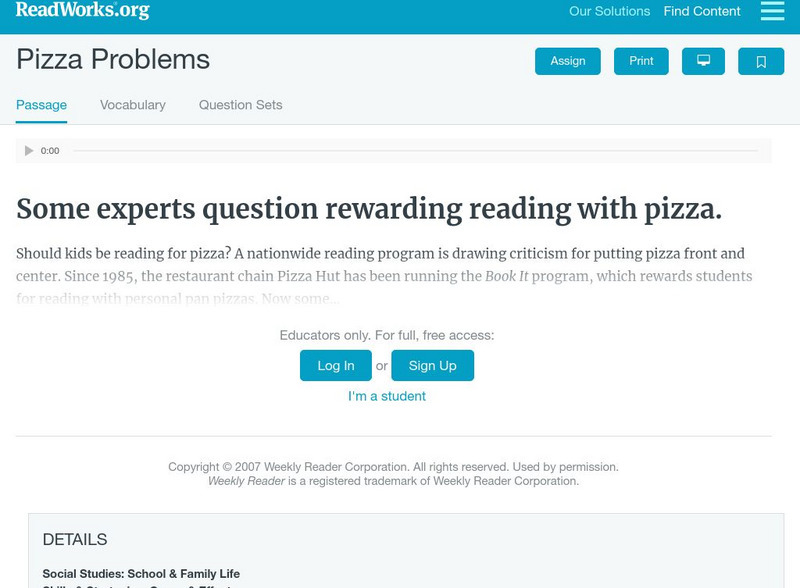EngageNY
TASC Transition Curriculum: Workshop 12
How can opinions slant facts? Workshop participants learn how to examine primary and secondary sources and identify the author's point of view. They also examine how visual art impacts the meaning and rhetoric of sources. Full of...
William & Mary
Inferential Reading Comprehension Considerations Packet
Don't forget to read between the lines! Educators learn tips and activities to help scholars learn to infer to increase reading comprehension. Activities suggested include think alouds, backwards words, and who's who. the packet includes...
New York State Education Department
TASC Transition Curriculum: Workshop 4
Why is it important to use precise language? Participants explore this question in the fourth activity in a series of 15 on effective instruction. Perfect for all content areas, the activity promotes appropriate language choice through...
Read Works
Read Works: Lesson: Cause and Effect
[Free Registration/Login Required] Using the book "When I Grow Up", this lesson plan aids students in learning about cause and effect relationships and the words that signify them.
ReadWriteThink
Read Write Think: The Day Jimmy's Boa Taught Cause and Effect
Contains plans for five lessons that teach about cause and effect relationships using Trinka Hakes Noble's books about Jimmy and his boa constrictor. In addition to objectives and standards, this instructional plan contains links to...
Read Works
Read Works: Cause and Effect 1st Grade Unit
[Free Registration/Login Required] A three-instructional activity unit on cause and effect intended to improve reading comprehension. Students learn to identify causes based on effects and effects based on causes. Students also use...
Read Works
Read Works: Cause and Effect 3rd Grade Unit
[Free Registration/Login Required] A three-lesson unit on cause and effect. Students learn to use signal words to identify cause and effect relationships and to describe possible effects when given a cause in fiction. Students also learn...
University of South Florida
Fcat Express: Cause and Effect
Site provides extensive assistance in preparing 4th grade students for Florida Comprehensive Assessment Test. This section helps students identify cause and effect in literature.
Read Works
Read Works: Fourth Grade: Three Lesson Unit: Cause and Effect
[Free Registration/Login Required] A three-lesson unit on cause and effect where students learn signal words to identify cause and effect relationships and then examine those relationships in historical fiction with Pink and Say by...
Teachers.net
Teachers.net: Cause and Effect
Simple and effective method for introducing primary students to the concept of cause and effect in literature.
Read Works
Read Works: Grade 2: Three Lesson Unit: Cause and Effect
[Free Registration/Login Required] A series of three lesson plans designed to teach learners to identify effects, causes, and the relationship between them. Lessons are based on the books Chrysanthemum by Kevin Henkes, Why Do You Cry?:...
University of South Florida
Fcat Express: Teaching Strategies (Reading) [Pdf]
Printable, fifty-five page PDF file of a staff development manual containing strategies for teaching reading. Includes chapters on vocabulary, main ideas and supporting details, author's purpose, chronological order, plot and conflict...
Read Works
Read Works: Bridge to Terabithia 5th Grade Unit
A Grade 5 literature study unit for the novel "Bridge to Terabithia" by Katherine Paterson. The concepts covered include cause and effect, character, genre, plot, predicting, and theme.
Beacon Learning Center
Beacon Learning Center: What Caused It?: Student Web Lesson
Students are asked to be detectives while they read and to look for the cause/effect sentences in the paragraphs. In this lesson, students read paragraphs and answer questions about it by either typing in their responses or selecting...
Read Works
Read Works: Implicit Effects
[Free Registration/Login Required] Students will listen to this read aloud story and listen for cause and effect relationships in order to better understand the story.
Read Works
Read Works: Endangered Animals at a Glance
[Free Registration/Login Required] Students read about endangered animals and a zoo that is working to try to help them. A question sheet is available to help students build skills in cause and effect.
Read Works
Read Works: Ice City
[Free Registration/Login Required] Students read about the ice festival celebrated in Harbin, China. A question sheet is available to help students build skills in cause and effect.
Read Works
Read Works: Crisis in Africa
[Free Registration/Login Required] Students read about the devastating problems in several African countries. A question sheet is available to help students build skills in cause and effect.
E Reading Worksheets
E Reading Worksheets: Patterns of Organization: Problem and Solution
This learning module provides an explanation of the problem and solution text structure. An explanaton of the problem and solution text structure is provided, and comparisons to the cause and effect text structure are demonstrated in a...
ClassFlow
Class Flow: Cause and Effect
[Free Registration/Login Required] Cause and Effect Lesson for 1st Grade Reading, written in Learning Focused Format.
Read Works
Read Works: Pizza Problems
[Free Registration/Login Required] Students read about the appropriateness of reading programs that reward students with unhealthy food. A question sheet is available to help students build skills in cause and effect.
Read Works
Read Works: Wild Weather
[Free Registration/Login Required] Students read about different types of March weather including: clouds, blizzards, thunder, lightning, and rainbows. A question sheet is available to help students build skills in cause and effect.
Read Works
Read Works: What's New at the Zoo
[Free Registration/Login Required] Students read about some new animals to live at the National Zoo in Washington, D.C. A question sheet is available to help students build skills in cause and effect.
Other
Slide Serve: Alexander and the Terrible, Horrible, No Good, Very Bad Day
This is a slideshow that examines the cause-and-effect text structure of Alexander and the Terrible, Horrible, No Good, Very Bad Day by Judith Viorst. The lesson plan includes questions for students to answer in their Reading Response...



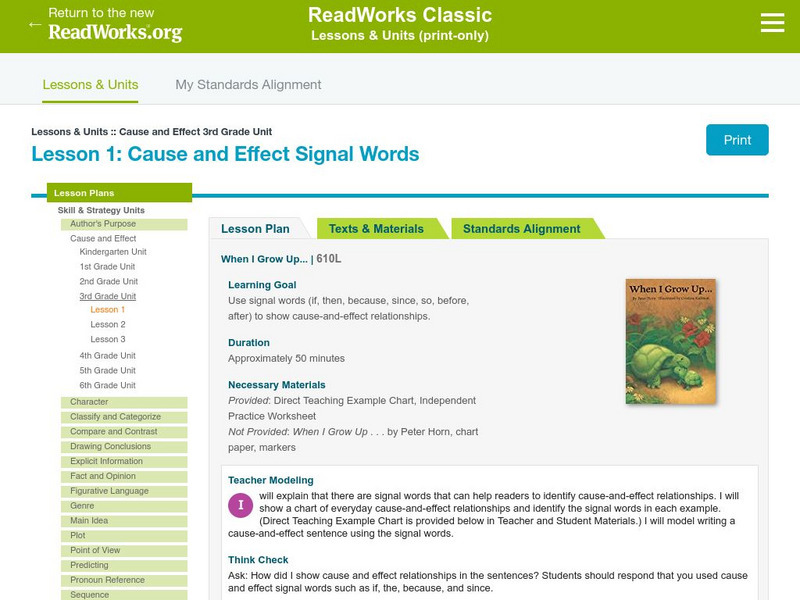
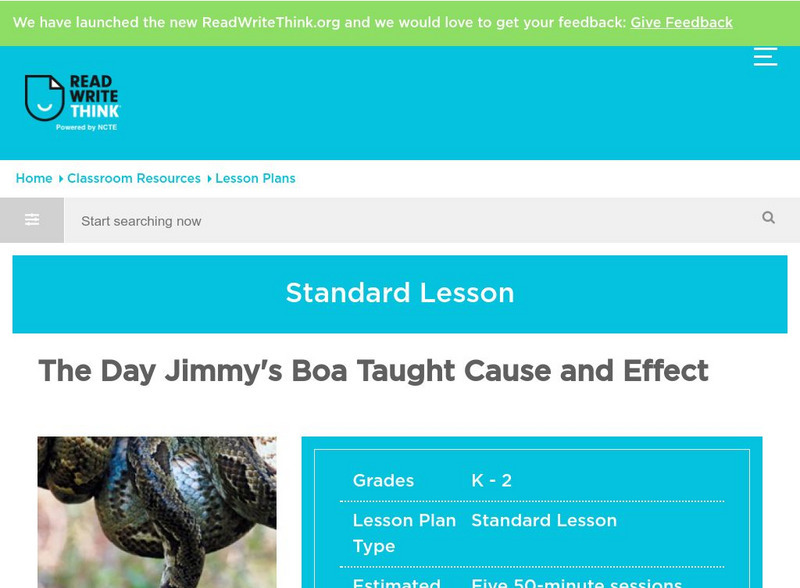
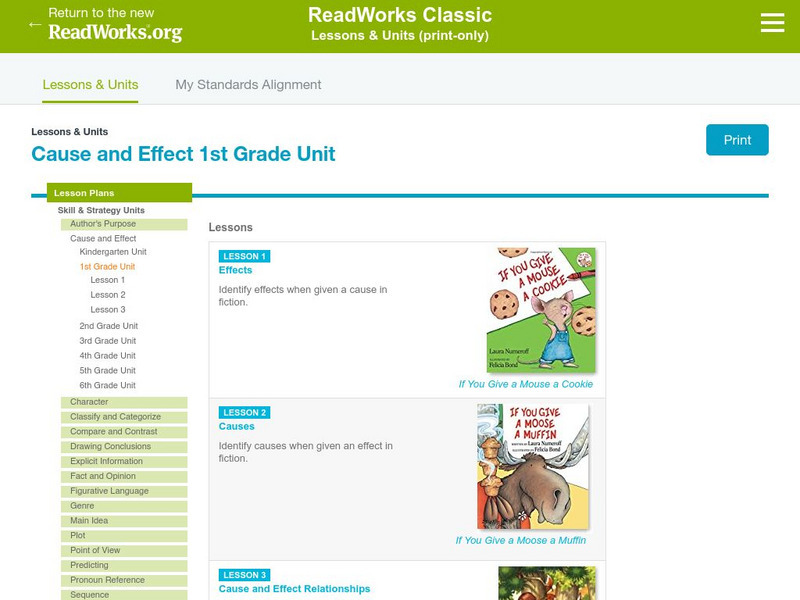
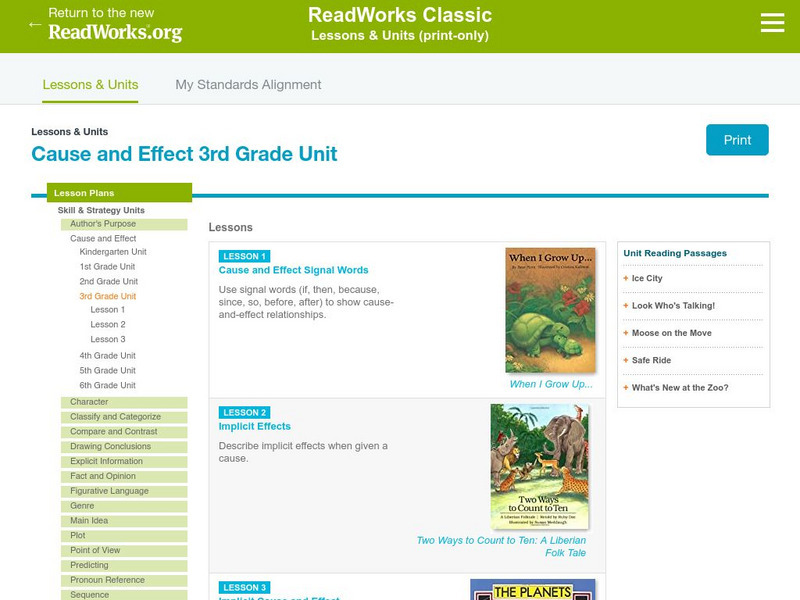

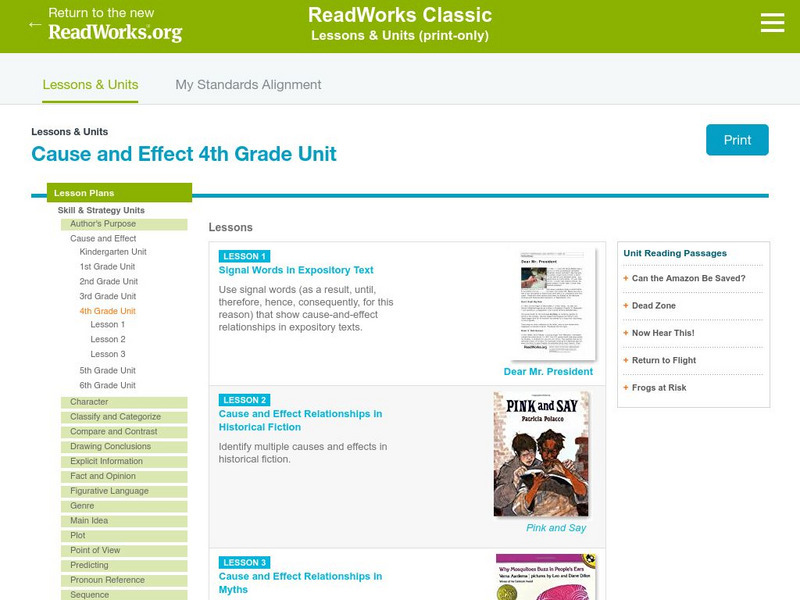

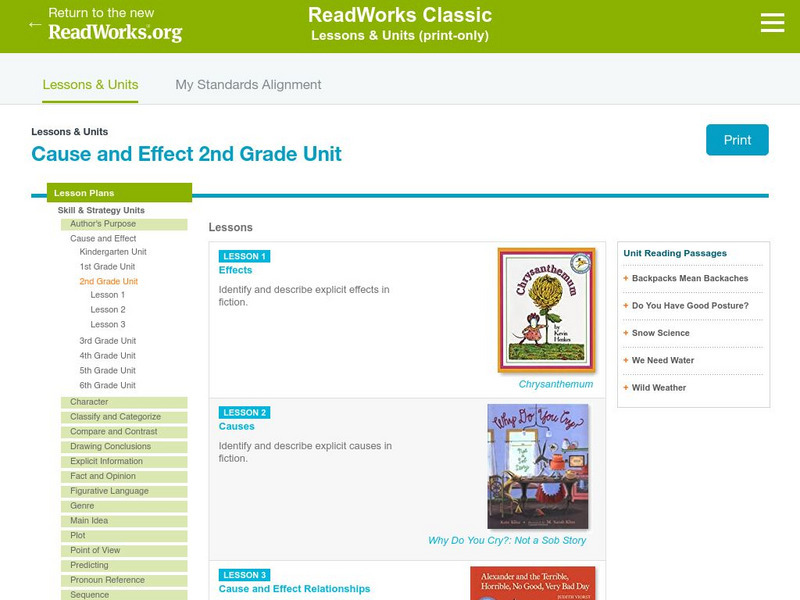
![Fcat Express: Teaching Strategies (Reading) [Pdf] Study Guide Fcat Express: Teaching Strategies (Reading) [Pdf] Study Guide](https://static.lp.lexp.cloud/images/attachment_defaults/resource/large/FPO-knovation.png)
